If you are not in a hurry and would prefer a less expensive method, the cost of seeding is reasonable. Of course, you don’t get something for nothing. To save money, you’ll have to wait longer for the grass seed to establish .
|
There are several thing to consider when deciding whether to seed a lawn or to use sod, but the most important two are how patient you are and how much money you want to spend on your new lawn . If it is important to you to have a lawn that can be used and enjoyed within a short period of time, then spending the money for sod is the way to go. If all the proper prep work is don, sod will root quickly and can be ready for use in less than a months. Sodding can be done at almost any time of the year once winter is over, though it’s best to avoid hot midsummer temperatures.
If you are not in a hurry and would prefer a less expensive method, the cost of seeding is reasonable. Of course, you don’t get something for nothing. To save money, you’ll have to wait longer for the grass seed to establish .
0 Comments
What is Lawn Aeration?
Lawn Aeration is the naturally occurring process of air exchange between the soil and its surrounding atmosphere. Lawn Aeration helps reduce soil compaction without excessive injury to the grass plants. Core tines penetrate and eject cores onto the surface of the lawn. Practically speaking, aeration is the process of mechanically removing small plugs of thatch and soil from the lawn to improve soil aeration. What are the benefits of Lawn Aeration? Lawn Aeration helps the lawn's health and vigor, and it reduces maintenance requirements, and provides the following benefits
There are many different types of grasses & seed to choose from when deciding when deciding what to use to plant or overseed a lawn. The abundance of options can make the task of choosing somewhat overwhelming. Here we list a few of the more popular grass types with pros and cons with the goal of making a choice a little simpler.
The 'transition zone' is an area in the middle of the country where both cool season & warm season grasses tend to grow. Definitions vary but the northern edge covers the middle of Illinois across lower Pennsylvania to the east coast. The southern edge can go as far south as northern Louisiana and across middle Mississippi & Georgia to the east coast. We will concentrate on 5 varieties that do well in this area. Cool season grasses tend to start growing in early spring & continue until the heat of late summer may cause them to go dormant and turn brown. Growth starts back up with the cooler weather of early fall & some may stay green through winter.Warm season grasses typically start their growth later in spring & thrive during the summer months. Dormancy start in the early to late fall & stays on through winter. The pros and cons listed here are just generalizations for each type of grass. Different 'cultivars' of these grasses have be bred to overcome some of their flaws. and we will break down each group in greater detail in subsequent posts. Cool Season Grasses Fescue - most common in our area. 2 main groups fine leaved & broad leaved or 'tall turf fescue' - relatively quick & easy from seed. 10-14 days to start. may appear clumpy until lawn fills out - can be sodded if done properly - performs well in shady areas - will go dormant (brown) in extreme heat but recovers well when cooler temps prevail - pest resistant (bugs) but does better in lawns that have a weed control program - better drought resistance than other cool season grasses - does reasonably well in high traffic areas Ryegrass - 2 types - 'perennial' - used as a turf grass. 'Annual' - used as a temporary ground cover only, not as a turf grass - starts quickly & easily from seed - 3 to 7 days - fills in quickly, is bright green in color & grows thick - especially in the springtime - perform well in slightly shaded areas but not in intense shade - drought tolerant for short periods of time but needs regular watering to stay green - goes dormant (brown) in the summer but recovers in the fall ( not as quickly as fescue) - low to moderate traffic - good choice to maintain a green color in the winter months Bluegrass - grows well from seed but takes time to start - 2 to 4 weeks - does ot fill in as quickly as rye but does spread much more evenly than fescue - starter fertilizer is helpful to the process - commonly used as sod & does well if installed properly - prep work is important - lush beautiful finely textured grass but requires more maintenance than most - no drought tolerance - regular watering in warmer temps a must - needs more water than fescue & rye - does poorly in shaded areas - weed control program beneficial to bluegrass lawns as is leaving the grass taller - small amounts of fertilizer help as well but too much nitrogen will burn up lawn Warm Season Grasses Bermuda - grows well from seed or sprigs - not seen often as sod unless it is a hybrid - rarely needs reseeding - good for high traffic, often used on golf courses & sports fields - prefers full sun - grows patchy in any amount of shade - grows faster in the hot summer months but stays dormant & brown for most of the cooler months of the year - can be overseeded with rye for year round color - low growing wiry grass - spreads in an aggressive manner- will take over landscape beds if not kept in check - drought tolerant - needs less water than most but stays greener with regular watering - somewhat susceptible to pests & a weed control program is recommended Zoysia - grows from plugs & spreads slowly - takes considerable time to establish - grows very densely & chokes out just about everything once it is established - From seed (plant in late spring for Southern Indiana) 14-21 days to start - 12 weeks to fill in if planted properly - will spread into landscape beds if not kept in check but not as aggressive as bermuda - likes full sun - does not do well in shade but better than bermuda - somewhat drought tolerant but preforms best with weekly watering - tends to stay dormant from early fall to late spring -does not mix well with any other grasses - stay brown for more of the year than any other transition zone grass As winter eases off and spring awakens, gardeners delight in long days spent outdoors watching their gardens come to life. It's Landscape Time! Once landscape designs are complete, garden beds have been created and the planting of shrubs and trees has been tended to, your next task is to add a layer of good mulch.
Mulch benefits your garden in multiple ways. One of the major benefits of mulch is water conservation. Properly mulched beds retain 10 - 25% of the moisture normally lost through evaporation. Secondly, it saves hours of unpleasant weeding by blocking the sunlight necessary for weeds to grow. Mulch forms a protective barrier between your lawn mower, or weed eater, and the trees and shrubs that are bordered by your lawn. Properly applied mulch insulates the soil in throughout the seasons, and prevents soil erosion. What Types of Mulch Work Best? Do-It-Yourself landscapers have a variety of options when it comes to mulch. Each has its own strengths and weaknesses. Here is a list of some commonly used mulches with brief descriptions of their pros and cons: Pine Bark This is one of the most commonly used mulches and the one you see frequently in your neighbors' plant beds. A 2" - 3" layer is ideal. Pros: It is attractive and provides a dark aesthetic. It can be purchased in a variety of sizes from shredded, which will be discussed later, to larger pieces - called nuggets. Cons: The larger pieces can attract termites and other insects which might make certain plant species vulnerable. Nuggets are light-weight, which means they can easily float away if over-watered or during a rain storm. Pine Needles Pine needles make a great mulch for trees and shrubs that like acidic soil, such as oaks, gardenias and hollies. You will need about 2" for proper insulation. Pros: Great for plants that prefer acidic soils and allows water to easily penetrate. Cons: Pine needles will kill eventually kill plants that do not like acidic soil. It isn't as attractive as other materials. Shredded Hardwoods This can be used just about anywhere. It is a favorite for landscapers who want a soft natural look and can also be used on paths to prevent erosion. Pros: It decomposes slowly and is aesthetically pleasing. It's one of the best weed suppressors. It does well on uneven landscapes and hillsides. Cons: Over time, it can create a more alkaline soil. It compacts well, which eventually prohibits water penetration. This shouldn't become an issue if it's not being walked on regularly. Wood Chips Different from pine bark nuggets, this is comprised of both wood and bark that has been chipped to various sizes. Pros: Offers a variety of color to the plant beds. Different sized pieces decompose at different rates, adding nitrogen to the soil in a "time release" fashion. Cons: Can attract harmful termites and other insects. Crushed Stone, Gravel, & Pebbles This can be an affordable mulching option, especially suited for desert or succulent themed landscaping. 2" usually provides enough cover. Pros: Allows water and air to circulate and doesn't decompose. Cons: Weeds can often make their way through it. It can scatter onto sidewalks and into lawns without the right border. It can also create an alkaline soil over time. Landscape Ground Cloth Made from plastic, paper, and other materials, landscape fabrics are a durable mulch option. Pros: Allows proper air/water circulation and is a good weed suppressant. Cons: Works best in conjunction with another mulch on top for optimal water conservation and week control. Dyed Mulch Dyed Mulches are relatively new on the market. They usually come in reds, browns, or blacks. They are made from recycled wood products. Pros: All the benefits of wood chips (see above). Cons: While dyes are usually vegetable based, the wood can come from treated wood sources, leaching undesirable chemicals. Purchase dyed woods with the Mulch & Soil (MSC) Logo to ensure the wood is chemical free. How to Apply Mulch Once you've selected the mulching material you feel works best with your landscape design, it's time to apply it.
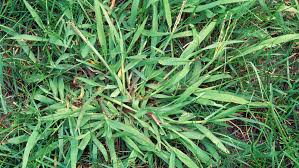 Crabgrass is an annual with branching, spreading stems. Its coarse, blue-green to purplish leaf blades can be smooth or hairy, depending on the species. Flower heads with several fingerlike spikes rise from narrow stems. Crabgrass thrives in lawns mowed shorter than 2 inches, underfed lawns, and those watered frequently and lightly. Thick, deeply irrigated turf is the best control. Dig crabgrass before it seeds. Preemergence crabgrass herbicides are available; apply in spring before soil temperature reaches a steady 60 degrees F. 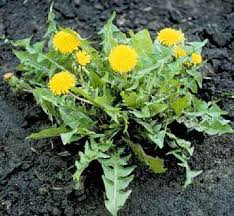 Dandelion is a broadleaf perennial recognized by bright-yellow flowers and a large, flat rosette of leaves rising from a long, fleshy taproot. Dandelions favor thin turf. Pull or dig out young plants before they go to seed. Then cut any regrowth from leftover root pieces. You can also spot-treat weeds with a selective broadleaf weed killer. 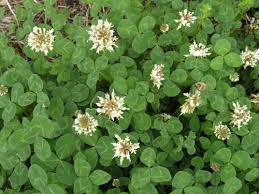 White clover is a broadleaf perennial that used to be included in grass seed mixes. Also called white Dutch clover, it's distinguished by three-lobed leaves with a crescent-shaped white band. The plant spreads by creeping stems and thrives in sparse, undernourished turf with excessive moisture. Control it by watering well, applying nitrogen fertilizer and avoiding excessive applications of phosphorus. Spot-treat with a selective broadleaf weed killer; a second treatment often is needed. 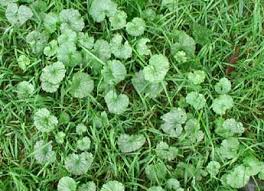 Ground ivy is a broadleaf perennial with square stems and bright-green rounded leaves with scalloped edges. It reproduces by seed and creeping stems that root as they touch the ground. Also called creeping Charlie, it prefers damp soil and shade. Improve drainage and water less. Pull stems and roots of young plants. Spot-treat with a broadleaf postemergence herbicide.  Yellow woodsorrel is a broadleaf perennial, although it might act as an annual in some regions. Also known as oxalis, it has cloverlike leaves and yellow flowers, each with five petals. Plants spread by roots and seed. This weed is difficult to control, and does best in thin turf watered frequently and lightly. Water thoroughly and fertilize properly. Dig out small plants or spot-treat isolated ones with a postemergence weed killer. Prevent new weeds with a preemergence herbicide with oxalis on the label. 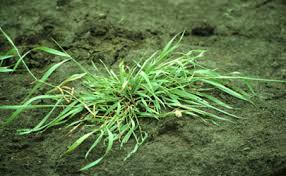 Quackgrass is a perennial grass with flat light-green to blue-green leaves. It spreads by seeds and aggressive underground stems, called rhizomes. Thoroughly dig out roots and pointed rhizomes—remaining pieces regenerate new plants. Spot-treat with a nonselective weed killer. 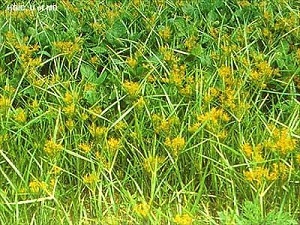 Yellow nutsedge is a grasslike perennial sedge with triangular stems and 1/4-inch-wide leaves. Also called yellow nutgrass, it reproduces by seed and tubers that grow at the root tips. Tubers often persist in the soil, making established plants difficult to control. Mow high in early to midsummer and water infrequently though thoroughly. Spot-treat with postemergence herbicides labeled for nutsedge. As with most weeds, control is easiest when plants are small. 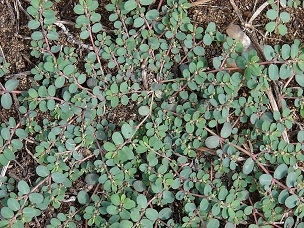 Spotted spurge is a broadleaf annual that grows close to the ground in a fast-spreading mat. Its small leaves are green with a brown-red spot on top. Cut stems exude a milky liquid. Spotted spurge reseeds heavily. A high-mowed, well-fertilized and vigorous lawn provides tough competition. Pull isolated plants before they seed. Spot-treat with a postemergence weed killer and use appropriate preemergence herbicides to prevent new weeds.
When done correctly, overseeding a lawn can provide a healthy and lush lawn. Knowing your grass variety, and the proper steps to take, helps create results.
There are two different reasons for overseeding in the fall. Cool season grass (Kentucky bluegrass, perennial ryegrass, or tall fescue) is overseeded to maintain the thickness of a lawn, especially if it has thinned due to summer heat. Warm season grass (bermudagrass, zoysia grass or buffalograss) is overseeded with perennial ryegrass, a cool season variety, when the warm season grass becomes dormant right before winter. This creates a green lawn all year round. The method for overseeding both kinds of lawns with cool season grass seeds is the same. Below are some tips to help you use that method successfully. 1. Cool season seeds germinate when air temperatures are about 60 to 75°F, and when soil temperatures are about 50 to 55°F. Planting too early or too late in the season will lengthen the time it takes for the seeds to germinate, or prevent them from germinating at all. 2. If your soil is compacted, you should aerate the soil before you plant the new seeds. Pulling out plugs of soil is stressful to an established lawn and therefore would be devastating to new seedlings. An aerated soil also has the benefit of new spaces for seeds to grow in. 3. You can choose seed that matches the cool season species in your lawn, but you could also introduce a new variety, which would increase your lawn’s tolerance to drought and disease. Perennial ryegrass is the only option for overseeding warm season lawns because it germinates quickly and has unfavorable conditions to compete with come spring, when the warm season grass begins growing again. Pick a grass seed with a high pure live seed rate, a high germination rate, and no weeds or filler material. 4. Before you overseed, mow the lawn very short, almost to the point of scalping it. When the seeds start growing, you will want them to have enough access to sunlight, and taller grass can block much of it. 5. Sow the recommended amount of seed split in a horizontal and then vertical direction across the lawn. There should be recommendations of what rate to overseed at on the bag. You can sow by hand or with a seed spreader. 6. Good soil and seed contact is vital to the germination process. For this reason you should rake the lawn lightly after you’ve overseeded. You could also add a 1/8-inch layer of topsoil and firm it with a roller, although it’s not necessary. 7. After the seeds have been planted, keep the soil lightly moist by watering briefly and frequently several times a day. If the soil is too dry, the seeds could die before germinating. If the soil is too wet, they could get washed away. Once the new grass is visible you can switch to watering deeply and infrequently.
Want your lawn to look great but don't have the time to do it yourself? Consider hiring a lawn company to do it for you. Choosing a lawn care business that will provide many different types of work (mowing, aerating, seeding, fertilizing, landscaping, tree & shrub trimming and many others) is an option. Many people simply want to hire a company to mow the lawn. If that is your goal here are a few things to consider in order to ask the right questions when choosing a lawn mowing service.
Frequency - How often do you want the lawn mowed? some companies only offer weekly mowing packages, but others offer mowing every 9/10 days or every other week as an option. It is also a good idea to ask what the policy is when the weather is dry and to ask how late into the year the company generally mows. Pricing - How much are you going to be charged & how are you being charged? It may vary - It could be a monthly charge for "x" months or it could be charged "per cut". Once you are quoted a price find out what the billing options are. Some may offer a discount for email billing. Most should offer some sort of a discount for seasonal prepayment. Do not be afraid to make a counter offer - it doesn't hurt to ask for a better price. What does the service entail? - make fair comparisons - a company way offer a better price simply by providing a lower level of service. Do you want the grass bagged? Is trimming included? Edging? Blowing off walks, patios, drives & decks? Weeds in walkways & driveways taken care of? Is the curb kept clean? Decide what level of service that you expect and make sure that it is included ion the quotes that you get. Customer Service - Did someone answer when you called for a quote or did you have to leave a message? How long did it take for someone to get back to you? How long did it take for someone to come by & give you an estimate? Can you contact the lawn service by email? by text? Smart phones make it easy - an hour or so should be plenty of time to get a response or a callback. How you are treated before you are a customer may say a lot about how you would be treated as a customer. Research - There are many places online to find more information on a service business (ratings,services offered , how long in business). The Better Business Bureau (example) is one. Angie's List is another. Take advantage of free resources that are available. Insurance - Any service provider that you hire to do work on you property should be insured. Most companies will be able to show one page certificate of insurance (showing what they are covered for) when providing an estimate. Other considerations - Are the employees uniformed? Is the company truck lettered & clean? People that take better care of what is theirs may take better care of what is yours. Do they use commercial equipment? A lawn mower from a box store will work well for mowing 1or 2 yards a week, but may not be reliable enough to do 20 or 30. A person that has invested in the right equipment may be a factor in showing reliability.
It’s the first thing that anyone comes across when paying a visit to your home and will often be a reflection of your standing in the neighborhood. You know, keeping a good lawn means to most people, especially your neighbors, that you keep a neat home. Now you may not be Desperate Housewives’ “Mrs Bree Vandekamp” whose lawn can win any “Best Lawns” award, but you can still have the perfect lawn and I’m not talking about just adding fertilizer to the lawn every now and then. It is important to revitalize your garden every five or six years because grass gets tired and needs a rebirth. How do you go about it? The secret is in knowing when to overseed and power seed or even to do both.
Take a good look at your lawn, if it looks like its thinning out or weak, over-seeding may be your answer. When you overseed, you plant seeds directly into the already existing turf without tearing up the soil or turf. You may be thinking that applying sod can do the same trick but it may not give the same results. This is because when you overseed, you get a thicker, more beautiful lawn for a fraction of the cost if you used sod. Overseeding also keeps away weeds if it is mowed over 2 inches tall. It also keeps disease away because any new variety of seed sown today will have better resistance to disease than those seed varieties already existing in your lawn. The early fall is the best time to overseed but you can also get good results in the spring. If your lawn has bugs or disease, or you do not have an automatic sprinkler system or your dog is making your lawn its playing field; you need to go for power seeding. When power seeding, you use a machine with knife-like blades to create slits in your lawn and then drop the seeds into the slits you created. If you are also looking for a quick fix to a weak lawn or you want to ensure you get grass that germinates at the optimum level you may want to opt for power seeding. So what is the difference between overseeding and power seeding? It all has to do with personality. Some people want to get their hands and feet in contact with the soil others prefer to have a machine do all the hard work. The overseed and power seed are similar methods of getting your lawn to scream beautiful except that in the overseed method you;
For a successful overseeding process, the grower will need to ensure two things:
Power seeding helps increase turf density and improve the overall appearance of your lawn. A dense lawn keeps the bugs and weeds away. It can be used to touch up small bare areas or when doing a complete lawn renovation. The beast season to power seed is in the Fall because of the warm days and cool nights that make it ideal for proper germination of the seed and the development of a turf early. The Fall Season also enables the seed to establish itself more quickly because it is not getting competition from weeds. Finally, make sure you do some research on the seed you are buying. Whether you choose to overseed or power seed or both, the overall outcome is that it will ensure a consistent, healthy and beautiful lawn. 1. Weed control is critical.
The proper pre-emergent application will stop the winter weeds. Any escapes can be treated after germination. Pre-Emergent is a chemical that is used before weed seed germination. Early application, before September 30th, will control your winter weeds that come from seed. Asking for help wherever you buy your turf products is critical. Make sure the weeds you are after are on the label and put out at label rate. The incorrect rate will result in very poor weed control. If you do have some weeds that were not controlled for some reason, make sure you seek a professional opinion when trying to control them. Not all chemicals are labeled for all types of turf. 2. Apply a low Nitrogen Fertilizer to reduce the probability of Brown Patch. Nitrogen is the first number in your fertilizer analysis on the bag. A Fall fungus that is problematic is Brown Patch. Brown patch loves highly fertilized turf. Using a lower percent of Nitrogen, 9 or less will help to prevent Brown Patch from happening. Brown patch loves cool damp nights. When soil temperatures get below 75 degrees, and there is adequate moisture from irrigation or mother nature, Brown Patch can occur. Brown Patch is a soil born fungus. When the conditions are right, cool damp nights, the possibility exist for Brown Patch to occur. A preventative can be applied before the conditions occur. Watching your weather report will give you a good indication of soil temperature because the soil temp and the Beach Water temp at Galveston are just about the same for the Houston area 3. Applying fertilizer that has an elevated Phosphorous and Potassium content will strengthen your root system. Phosphorous and Potassium are the second and third numbers in your fertilizer analysis. Make sure these two chemicals 2x the Nitrogen number and you will be promoting root growth and your plants will be stronger and healthier once spring gets here. 4. Irrigation is still critical during the cooler months. Evaporation and evapotranspiration will be lower during the shorter days so watering will be minimal. Applying 1/2 to 3/4 inches of water every ten days should be adequate. A tip to determining watering rates. Place stable flat containers in your lawn area. Run your irrigation for a set time and then measure the amount of water collected in your containers. Place the container on a level flat surface and use a ruler to measure the water. Adjust the times of your system accordingly. 5. Rid your yard of bugs before they hibernate. An early application of insecticide will rid your turf of grubs, bill bugs etc. before the cooler weather sends them into hibernation. That way you will not have a battle with insects once the spring warm up arrives. It is critical that the bugs you are after are on the label. Make sure and follow the manufactures rate recommendations. Ask for help and read the label. This is very important. 6. Mow for healthier turf. Mow your grass every week until the growth rate is slowed by cooler weather. After that mow at least every 10 days to keep your turf manicured. This will allow adequate air circulation and reduce the possibility of fungus. Mowing height should be determined by variety of grass. Never remove more than 1/3 of the plant during the growing season. What the numbers mean
Every fertilizer bag should have 3 bold numbers. The first is the amount of nitrogen (N), the second the amount of phosphorus (P) and the third the amount of potassium (K). Nitrogen is in the form of ammonium (NH4) or nitrate (NO3). Phosphorus is in the form of phosphate (P2O5) and potassium is in the form of potash (K2O). These numbers represent the percentage of each nutrient in a bag of fertilizer and are always in the same order - (N)(P)(K). A 20lb bag of 10-10-10 fertilizer contains 2lb (10%) nitrogen 2lb (10%) phosphorous and 2lb (10%) potassium. A 50lb bag of 18-24-6 starter fertilizer contains 9lb (18%) nitrogen 12lb (24%) phosphorus and 3lb (6%) potassium. Note that a fertilizer does not have to contain all three nutrients - urea (46-0-0) is an example. What the nutrients do
- supports root growth and flowering - why there is generally a larger (P) number in starter fertilizer - less mobile in soil in Midwest as it tends to bond tightly with clay soils - part of every cell in plant - assists in storage of food Potassium - second only to nitrogen in plant uptake - essential to disease resistance and tolerance of temperature extremes - helps with root development - not a fixed part of plant tissue - helps transport nitrogen and sugars in plant to where they need to go - is recycled from clippings - bagging of grass can (over time) result in potassium deficiency
There are many steps to creating a lawn lush beautiful and green for Spring and Summer enjoyment. Regular watering, choice of grass seed,fertilizing the lawn, and weed & insect control are all part of the process. Aerating the lawn is also an important step & this article will explain the key benefits of lawn aeration.
Over time the use of lawn equipment & the repeated foot traffic of people and pets eliminate pockets of air and moisture between soil particles. This is called soil compaction. This compaction can occur in any type of soil it is worse in clay soils that are composed of tinier particles (like we have here). This compression is compounded in the winter time by periods of excessive snow and rain. Roots make up at least 70% of a grass plant. They take in oxygen and emit carbon dioxide. Spongy permeable soil allows for this air exchange to take place. This is part of the reason why things grow so well in potting soil - lighter particles that have lots of air space in between them. Using a <strong>core aerator (</strong>or sometimes called a<strong> plug aerator)</strong> to take plugs out of the soil helps alleviate compaction. Others - spoon type ( these have 'C' shaped tines) and spike type aerators - simply poke holes in the ground and offer little benefit to the turf and soil. Why do it in the spring? Almost anytime that the grass is growing is a good time to aerate. Although we tend to avoid doing aerations during the heat of late summer, springtime works well. The ground tends to be softer and allows the machine to pull longer plugs. Loosened soil combined with spring rains will encourage new and deeper root growth. The direct root contact will make soil amendments and fertilizers more readily utilized. Spring aeration is a great way to prepare your lawn for the rigors of summer heat. For Southern Indiana cool season grasses (blue, rye and fescue) should be aerated from March to mid May (depending on the weather). Warm season grasses (bermuda and zoysia) should be done from early May to late June. Cool season grasses are often aerated in the fall as well. Bermuda & Zoysia should not be aerated in the fall here (this is not the case for areas that are much farther to the south). A lawn is a very essential part of a household. It can serve as a welcoming mat to visitors and also as a playground for children and pets. Today there is an increasing value for land space, a lawn is something very useful even in a small area. A well grown lawn gives the family a natural recreational spot while contributing to its physical and mental health. It also increases a house’s aesthetical appeal, and is often a mark of the owner’s pride.
Proper lawn care is a kind of a balancing act. You need to know what nutrients your lawn is lacking, or which ones you could do less with. Iron, is one such nutrient which tends to be on the lesser side. Your lawn needs iron for vital functions like healthy growth, enzyme and chlorophyll synthesis, nitrogen optimization, metabolism etcetera. However, iron is mostly used up by the other nutrients and hence it is difficult to maintain its optimum level. Here are a few pointers to help you determine if your lawn needs a dose of iron and how:
As said above, lawn care is a job that requires patience, and love for your plants. There are a number of things that could go wrong, you need to stay on track and get professional help whenever possible. Once you have done your part, sit back and watch Mother Nature transform that barren piece of land into the beautiful, lush green lawn you have always wanted. Before you take any action, make sure to consult a lawn care specialist. White grubs - Japanese beetles - are one of the most detrimental insect turf pests in our area.Foliage from shrubs, fruit trees & ornamental trees provide food for adult beetles. The larval stage (grubs) develop in the soil and destroy turf by feeding on the roots of grasses in the lawn.
Did you know that healthy grass is 70% to 85% water? To maintain active growth your turf will need .75" to 1.5"of water a week. Too much water and soil may get saturated to the point that roots may not get enough oxygen to grow deeper. Not enough water - especially during the summer months - and everything dries out, causing the grass to brown and go dormant or maybe even die. Watering in the morning is usually the best option. Watering during the day leads to more loss from evaporation. Watering in the evening or at night leaves the grass wet too long and could encourage turf diseases. Water between 4:30 am and 8:30 am when the wind is calm and the air is cool for best results.
Generally speaking, an inch of water will moisten clay soils 4 to 5 inches deep. One inch of water (.5"-1" once or twice a week) in the cooler months is plenty. 1.5 inches of water (.5"-.75" 2-3 times a week) in the summer months is better. Make adjustments for rain or unusually hot weather as needed.
Cut High - especially bluegrass & fescues - deeper root systems, helps choke out weeds (esp. crabgrass), extra shade holds moisture better. Cut too short and plant will rob nutrients from roots for top growth.
One Third Rule - never cut more than 1/3 or grass blade.More is detrimential to root growth. If grass gets out of hand - cut 1/3 - wait 3 days - cut again. Leave Clippings - grass blades are mostly water, break down quickly and add nutrients back into soil. If you don't fertilize you shouldn't need to bag. Well fertilized, fast growing grass may need to be bagged certain times of the year. Sharpen Blades - Do this regularly and have an extra set. Dull blades rip grass. Grass will grow less evenly and will yellow at ends. This is especially important in dry summer weather.
Spark Plugs - If the mower is hard to(will not) start, change the spark plug. They are cheap to buy, easy to change and fix the problem most of the time.
Oil - change oil mid-season, before the intense heat of summer. Mower will be easier to start and will last longer. Crabgrass is a warm-season annual that primarily reproduces by seed and is one of the more troublesome lawn weeds to deal with. A single plant can produce thousands of seeds. This seed proliferation makes it difficult to rid a lawn of it.
Crabgrass starts to grow in the spring . New plants can continue to germinate until the early fall. From mid-summer to fall, crabgrass produces seed. The crabgrass plants die out in the mid to late fall, leaving lots of seeds to start the cycle again in the spring. So how do you get rid of it? Well timed preemergent herbicides are the most effective way to eradicate this difficult weed. Preemergent herbicides come in either liquid or granular form and are designed to kill seedlings before they emerge. Timing is important in order for them to be successful. Apply a preemergent before germination, but not too far ahead ( a little early is better than late). For crabgrass this is when the soil temperature reaches about 55-60 degrees F. Within a week or so of theses temperatures, crabgrass plants start to grow. Two options for for crabgrass control are Tupersan (siduron) and Dimension (dithiopyr). Dimension is safe to use on most bluegrass ryegrass and tall fescue. Check label first for fine fescues. Tupersan is also safe for similar grasses. Both are good preemergent herbicides and both have some effectiveness as a postemergents. Dimension controls a wider variety of weeds, but Tupersan may be a better pick for newly seeded lawns. • Lawns should be watered after the application of a preemergent herbicide. • While inexpensive weed & feed products may contain preemergents, they are usually in smaller amounts and not very effective • Always follow directions on the label. Apply the recommended amount for the area that you have. Spaced out treatments are much more effective than using too much at once. • If you plan on aerating or dethatching a lawn in the spring, do it before treating for crabgrass. • Mow taller - weeds are much more likely to grow in places where grass is shorter and thinner than in places with taller denser grass. • Overseed thin/bare spots in the fall. The best weed prevention is a thick stand of grass. It leaves no space for the weeds to grow. • Pull larger crabgrass plants by hand - Most postemergent herbicides are ineffective against larger plants.
Mowing has a major impact on lawn appearance and health, yet is often overlooked in terms of importance. Homeowners need to follow a few simple guidelines to assure lawns are being mowed properly.
The most frequent mistake is mowing lawns shorter than they should be cut. For most lawns, keeping the mowing height between three and 3.5 inches is ideal - mow a little taller during the heat of summer. Lawns mowed at higher heights tend to have deeper roots, less weed problems, and have a much healthier and greener look. Mowing too close invites problems such as weed invasions. Simply raising the mowing height can have a major impact on the quality of many home lawns. Mowing at a lower height when grass is growing quickly is fine, but the height should be raised as growth slows or stress increases, Shady lawns should be mowed a little higher as well.. Yards should be cut according to the growth rate of the grass. Do trim more than one-third of the leaves of the grass in any one cutting. Mowing as the lawn needs it is essential. In the spring, this will likely mean more than once a week. It is never advisable to mow when the grass is wet. Another issue related to mowing is whether clippings should be collected. As long as the lawn is mowed on an as needed basis and the one-third rule is followed, clippings will readily filter back down into the lawn, and need not to be collected. The clippings readily decompose (they contain 75 - 80 percent water) and do not cause thatch. Clippings also recycle nutrients, in particular nitrogen, so less fertilizer is needed. The newer mulching mowers create even finer clippings, recycling the nutrients more often as the smaller clippings decay faster. Mulching mowers do not perform at peak efficiency if the lawn is too tall (removing more than one-third of the grass blade) or if the lawn is wet. Another critical area overlooked by homeowners is maintaining a sharp mower blade. A sharp mower blade will cut the grass blade cleanly. This gives the lawn an even appearance and reduces disease from damage caused by a dull mower blade. Mow in the direction that is safest. Periodically change directions if desired, although mowing the same direction each time should not be a problem on taller turf typical of home lawns. The first and last mowing of the year can be slightly shorter, not so short that you scalp the lawn. Scalping in spring and allowing the grass to remain excessively high at the end of fall encourages weed and disease problems |
AuthorWrite something about yourself. No need to be fancy, just an overview. Categories
All
|

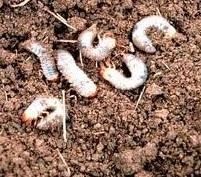
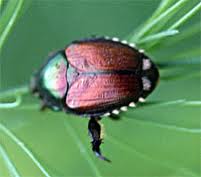
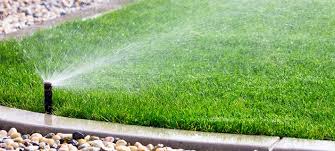

 RSS Feed
RSS Feed